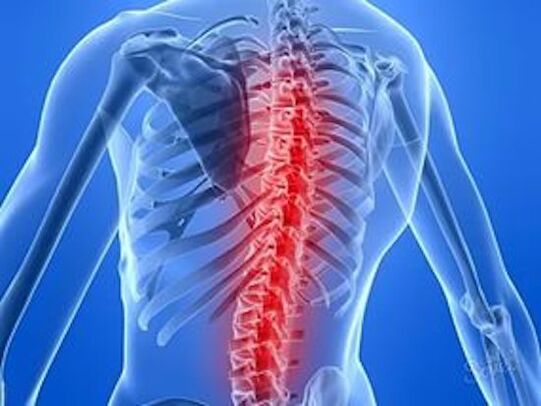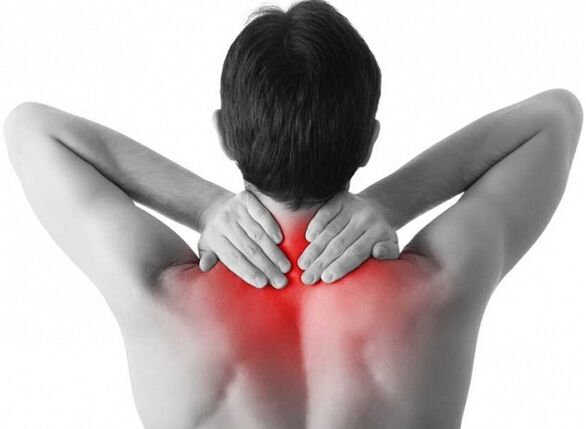Back pain affects more than 25% of the world's population and more than 50% of people of working age. Unfortunately, evolution has not bothered to ensure that people over the age of 35-40 live comfortably. The biomechanical structure of the spine is such that the absence of back pain is not a guaranteed fact, but rather a happy (and sadly temporary) coincidence. Especially now when the average office worker's body has to sit in front of the computer for 8-12 hours straight. But we have been adapted by millions of years of evolution in nature to a completely different and much more active way of life!

Can I treat my spine pain on my own?
Unfortunately, not everyone asks this very correct question. The answer is this: self-medication based on information from the Internet is extremely dangerous. This is a great risk that can lead to disability. If we are talking about internal pain such as pain in the back and spine, then it is not necessary to "diagnose" yourself and "prescribe" a treatment. The nerve endings of the internal organs are located differently than on the surface of the skin. The inner pain is difficult to locate, and sometimes it seems that it hurts, but in reality the reason is in another. Let's say that back pain can be caused by gastrointestinal cancer. And pain that someone else may describe in a forum or article as very similar to yours may be caused by entirely different reasons and require radically different treatment.
Yoram Anekstein, Tel Aviv Medical Center: "A very important tip: do not try to learn the names of diseases of the spine, understand their etiology, diagnosis, etc. Spondyloarthritis, scapular periatrosis, cervicobrachialgia - all these terms are useless for you. dozens of these diseases in medical college textbooks, and even with various clarifications and modifiers. You should know and remember the name of your diagnosis when delivered by a qualified physician. But not before. "
Alarming symptoms
Unpleasant sensations occur most often in the cervical and lumbar spine, but chest pain is much less common. It is subject to less stress, therefore osteochondrosis, protrusion and herniated intervertebral discs do not affect it very often. However, chest and thoracic back pain can be due to spinal problems.

Unpleasant sensations can occur occasionally, but are often not dangerous. If it is muscle pain (although it may not be like pain in the muscles of the arms after hard work and feels more severe), the cause is most likely due to overexertion due to a prolonged stayin too high a position or load. . If the pain goes away after a change in posture or a short walk and does not return, the problem is unlikely to be serious. Although it is necessary to deal with minor problems, for example, change the usual postures, increase physical activity and do physical education. And only a doctor can establish the severity of the problem. If there is even the slightest opportunity, you should definitely go to the doctor: it is always much easier (and cheaper) to cure the disease in the early stages than in an advanced case.
What is really dangerous? Here is a list of "alarms", after the occurrence of even one of which it is necessary to start diagnosis and treatment as soon as possible:
- the pain does not stop, changing the position of the body does not help; pain is not relieved by rest; pain worse at night;
- numbness (decreased sensation) or decreased strength of the extremities occurs;
- there are problems urinating and defecating (for example, the feeling of emptying the bladder is lost; incontinence of urine and feces, or vice versa, delay; not to be confused with constipation);
- the temperature rises, while there are no other reasons that can explain this, for example, SARS;
- pain wakes up, interrupts sleep;
- complications after postponed malignant tumors (the prescription period does not matter);
- unexplained weight loss;
- complications after taking steroids for many years;
- complications after recent serious illnesses;
- complications after recent infectious diseases;
- loss of the anal reflex;
- weakness in the hips and knees;
- neurological deficit;
- progressive deformity of the spine;
- back pain that worsens with rest;
- chest pain (SCA - ECG);
- general discomfort.
Keep in mind that you don't have to wait for everything to start at once. If any of these symptoms occur, see your doctor immediately.
Yoram Anekstein, Tel Aviv Medical Center: "The question often comes up: I made an appointment with a doctor, but my back has stopped hurting. Should I go or not? Definitely go. "
Articles on the Internet often try to describe what types of pain are characteristic of osteochondrosis, and which are for sciatica, etc. This is the wrong approach, the reasons we have already explained above. It does not matter what kind of pain: left, right, in the tailbone, everywhere, stabbing, lasts a couple of seconds or hours and days. These are all symptoms that scream that qualified medical attention is needed.
Causes of back pain
The most common cause is nonspecific pain associated with muscle strain, overstretching of tendons, ligaments, and fascia.

Much less commonly, pain is associated with a herniated disc involving the nerve root (~ 3% of cases).
Osteoporosis (including pathological fractures), infections (spondylodiscitis), tumors, tuberculosis, trauma, and other rheumatological diseases cause pain much less frequently (about 1%).
Diseases of the internal organs can also cause back pain (pancreatic cancer, peptic ulcer, for example, or acute coronary syndrome).
Degenerative changes, called osteochondrosis, and consisting of a complex of components (a decrease in the elasticity and strength of the disc substance, a decrease in the height of the disc, protrusion, hernia, changes in the vertebral bodies (Modic I-III), ligaments (spondylosis), facet joints (spondyloarthrosis) of a direct relationship with pain and other clinical manifestations do not have.
It should be understood that only the group of spondylitis and spondyloarthritis includes more than 10 diseases with various causes, characteristics of the course, symptoms, etc. The number of diseases of the back and the spine in particular is very high. But from the above descriptions, you yourself can understand that they are united by seriousness. Back pain cannot be ignored. Many of these diseases progress slowly, with long stages of remission. But at the same time, at each acute stage, the risk of complications increases (up to a complete loss of mobility).




























